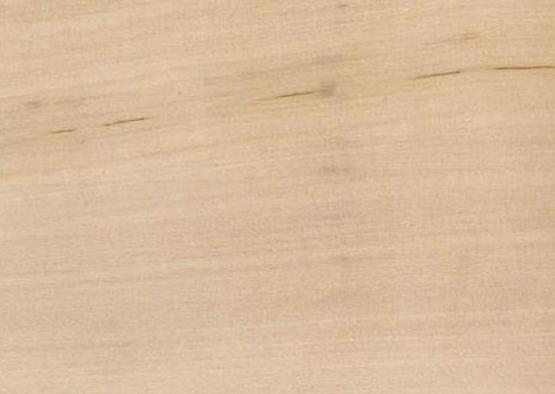White birch is a medium-sized hardwood native to parts of Europe, northern Asia, the Arctic and North America. (This is not Australian white birch)
Silver Birch, English Birch, Finnish Birch, Swedish Birch, European Birch, Betula verrucosa, Betula maximowicziana
Betula pubescens

White birch is a medium-sized hardwood native to parts of Europe, northern Asia, the Arctic and North America. In Europe it is known as Betula pubescens, while in Japan it is known as Betula maximowicziana.
The timber is pale in appearance with the heartwood ranging from a cream to pale brown, while the Japanese species tends to be more of a yellowish red colour. The sapwood is off-white and may not be well demarcated from the heartwood. The grain of White birch can be straight or interlocked with a fine, uniform texture.
White birch is easy to work and glues and finishes well. It is used mainly for the manufacture of plywood and as furniture. Other applications include shelving, cases, coffin boards, turnery, match splints and toys.
In Australia, white birch is mainly seen as plywood or imported furniture and is available in limited quantities.
Shrinkage
| Very Low | Low | Medium | High | Very High | |
|---|---|---|---|---|---|

|

|
||||
Tangential : |
4.10%
|
||||
Radial : |
2.60%
|
||||
Unit Movement Tangential: |
0.27%
|
||||
Unit Movement Radial: |
0.17%
|
Strength Group

Very High |
High |
Reasonably High |
Medium High |
Medium |
Reasonably Low |
Low |
Very Low |
||
Unseasoned: |
S1 |
S2 |
S3 |
S4 |
S5 |
S6 |
S7 |
S8 |
|
|---|---|---|---|---|---|---|---|---|---|
 |
|||||||||
Seasoned: |
SD1 |
SD2 |
SD3 |
SD4 |
SD5 |
SD6 |
SD7 |
SD8 |
|
 |
Stress Grade

| Structural No. 1 |
Structural No. 2 |
Structural No. 3 |
Structural No. 4 |
Structural No. 5 |
|
Unseasoned: |
F11 |
F8 |
F7 |
F5 |
F4 |
Seasoned: |
F17 |
F14 |
F11 |
F8 |
F7 |
Density per Standard

Seasoned: |
660kg/m3
|
|---|---|
Unseasoned: |
980kg/m3
|
Joint Group

Very High |
High |
Reasonably High |
Medium |
Low |
Very Low |
|
Unseasoned: |
J1 |
J2 |
J3 |
J4 |
J5 |
J6 |
|---|---|---|---|---|---|---|
 |
||||||
Seasoned: |
JD1 |
JD2 |
JD3 |
JD4 |
JD5 |
JD6 |
 |
Colour

| White, yellow, pale straw to light brown | Pink to pink brown | Light to dark red | Brown, chocolate, mottled or streaky | |
 |
||||
Mechanical Properties
Modulus of Rupture - Unseasoned: |
59
|
|---|---|
Modulus of Rupture - Seasoned: |
132
|
Modulus of Elasticity - Unseasoned: |
12
|
Modulus of Elasticity - Seasoned: |
16
|
Maximum Crushing Strength - Unseasoned:  |
22
|
Maximum Crushing Strength - Seasoned: |
52
|
Impact - Unseasoned: |
|
Impact - Seasoned: |
|
Toughness - Unseasoned: |
Low - up to 15 Nm
|
Toughness - Seasoned: |
Medium - 15 - 24 Nm
|
Hardness - Unseasoned: |
3.2
|
Hardness - Seasoned: |
5.3
|
Durability
| Low | Moderate | Reasonably High | High | |
| (0 - 5 yrs) | (5 - 15 yrs) | (15 - 25 yrs) | (more than 25 yrs) | |
In-Ground: |
 |
|||
| (0 - 7 yrs) | (7 - 15 yrs) | (15 - 40 yrs) | (More than 40 yrs) | |
Above ground: |
 |
|||
| (0 - 20 yrs, usually < 5) | (21 - 40 yrs) | (41 - 64 yrs) | (More than 60 yrs) | |
Marine Borer Resistance: |
 |
Lyctid Borer Susceptibility: |
Susceptible |
|---|---|
Lyctid Borer Susceptibility - Other: |
|
Termite Resistance: |
Fire Properties
| 1 - non-combustible | 2 - reasonably non-combustible | 3 - slightly combustible | 4 - combustible | |
Fire Properties Group |
Group Number - Other: |
3 if used on MDF or particleboard ≥12mm; veneer thickness 0.6-
|
|---|---|
Average Specific Extinction Area: |
<250
|
Bushfire Resistance: |
Not Tested
|
White birch yields a pale-coloured timber. The heartwood ranges from a cream to pale brown, while the Japanese species tends to be more of a yellowish red colour. The sapwood is off-white and may not be well demarcated from the heartwood. The grain of white birch can be straight or interlocked with a fine, uniform texture.
Applications include shelving, cases, coffin boards, turnery, match splints and toys.
White birch is easy to work and glues and finishes well.
Allied Forest Products
Australian Timber

GreeniGo

Mathews Timber Pty Ltd


